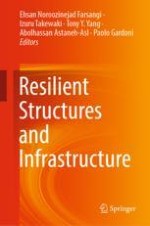2019 | OriginalPaper | Buchkapitel
Resilience of the Built Environment: A Methodology to Estimate the Downtime of Building Structures Using Fuzzy Logic
verfasst von : M. De Iuliis, O. Kammouh, G. P. Cimellaro, S. Tesfamariam
Erschienen in: Resilient Structures and Infrastructure
Verlag: Springer Singapore
Aktivieren Sie unsere intelligente Suche, um passende Fachinhalte oder Patente zu finden.
Wählen Sie Textabschnitte aus um mit Künstlicher Intelligenz passenden Patente zu finden. powered by
Markieren Sie Textabschnitte, um KI-gestützt weitere passende Inhalte zu finden. powered by
